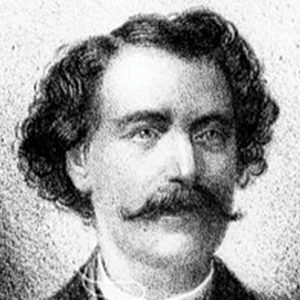 John Rogers Thomas (March 26, 1829 – April 5, 1896)
John Rogers Thomas (March 26, 1829 – April 5, 1896)
The popularity and magnetism of 19th-Century American music were becoming well established when John Rogers Thomas first arrived in New York as a member of the Sequin English Opera Company. His fine baritone voice had afforded him this touring opportunity, but it was his talent in composition and, eventually, his love for the new American musical style which would transform the young Welshman into a great American composer.
Born in Newport, Wales in 1829, he received a fine education as a singer and pianist. It was not long after his arrival in America that he joined Bryant’s Minstrels, a popular and most successful vocal group. Making New York City his home, he went on to write more than one hundred popular songs as well as three large-scale works.
Somewhat a composer of mystery, his output was often attributed to several pseudonyms. His one-act operetta “Diamond Cut Diamond” of 1876 certainly reflects the “Harry Diamond” name under which he allegedly wrote.
Musical Style and Influences
Contents
His musical style is typical of the Civil War period, and uses mostly tonic-dominant harmonies. However, it was his skill of setting texts to melodies which clearly grew his popularity.
Ensembles could reproduce his songs with great effect, often allowing a soloist to take the verse and then singing in full harmony during the choruses.
What was John Rogers Thomas Known For?
The Music of John Rogers Thomas
Popular songs include his “Beautiful Isle of the Sea” (1865), “Old Friends and Old Times” (1860), “When the War Is Over, Mary” (1864), “Bonny Eloise—The Belle of Mohawk Vale” (1858) and “Rose of Killarney” (1876).
His children’s operetta “The Picnic” (1869) was written in collaboration with the well-known lyricist George Cooper. It proved immediately popular and includes delightful numbers such as “A Jolly Good Laugh”, and the same creative duo teamed up once more in 1870 to write the operetta “The Lady in the Mask”.
John Rogers Thomas Most Famous Works
On 5th November 1900, his “Dear, When I Look” was performed at the Queen’s Hall in London as part of the “Proms” series. Musical Director Henry Wood gladly programmed the song alongside works by Chopin, Verdi and movements from Wagner’s operas: a great accolade for any composer, alive or deceased.
Furthermore his “Tis but a Faded Flower” (1860) joined the soundtrack to the legendary film “Reap the Wild Wind” (1942) featuring actor John Wayne.
